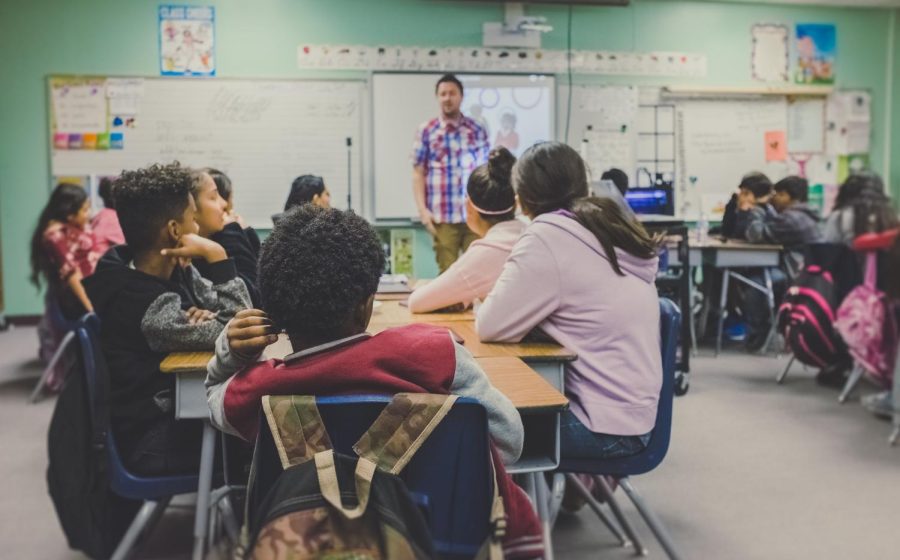Mixed signals from students and staff on IEPs, disability accommodations and accessibility at CHS
UNSPLASH PHOTO COURTESY OF Kenny Eliason
CHS students reflect on how staff deal and accommodate students with various disabilities. https://unsplash.com/license
January 20, 2023
School can be a burden. Difficult tests, mountains of homework and complicated concepts often make classes difficult to get through. This problem only worsens when disabilities are taken into account.
Communications High School makes itself more accessible by providing alternate modes of transport for those with physical limitations, such as elevators. It also provides equal opportunity for students with mental disabilities to succeed alongside their peers.
Individualized Education Plans (IEPs) provide students who meet at least one of New Jersey’s 14 classifications with special accommodations. Each of these classifications represents a different disability and can vary by state.
IEPs are given to students after a student goes through an evaluation process conducted by an IEP team. 504s and Intervention & Referral Services plans (I&RSs) are also available to students who don’t meet the classifications for an IEP.
MCVSD psychologist Krista Johnson plays a pivotal role in the process.
“I contribute to making CHS accessible to students with disabilities through consulting, communicating and collaborating with the individuals involved in student success,” Johnson said. “Through gaining data from multiple source points, we can ensure that students receive the support and interventions that fit their individual needs.”
Junior Julia Grau of Millstone detailed the ways her teachers have accommodated her learning disability.
“[Teachers] have been very understanding when things are not on time,” Grau said. “Especially in math because I’m allowed to skip certain questions if they’re repetitive.”
Grau maintains that the teachers of CHS are generally considerate when facing a student’s individual needs. Sophomore Owen Annecharico of Avon-by-the-Sea is also greatly appreciative of how teachers work with him.
“It’s been very helpful because they outline what I can do,” Annecharico said. “They suggest what they think I need, and they want to know what I think I need.”
Biology and forensics teacher Anthony Venezia believes that working with students in this way is crucial to understanding their needs.
“The number one thing that you need to do is learn to assess based on their skill level,” Venezia said. “If a student is not the best with grammar, you grade based solely on the content and not so much on how it’s delivered.”
Venezia tries to identify how the student works best and provide them with the resources they need to succeed.
Math teacher Scott Stengele takes a more generalized approach to help accommodate students’ various needs.
“I try to be accommodating for all students, not just students with IEPs,” Stengele said. “If a student needs a little extra time, I often give it to them. I try to give my quizzes after I teach a lesson, that way a student doesn’t feel pressured to finish it.”
Teachers like Venezia and Stengele help to make CHS as accessible as possible – however, some students feel that CHS could be a little more accommodating.
“When you tell other people, ‘Oh, I have extra time on this test,’ their first response is usually, ‘Really? Why don’t I get that?’” Annecharico said. “A better explanation to other students would probably be helpful.”
Oftentimes, a larger issue is noncompliant peers. Sophomore Katy Umbs of Monmouth Beach, who has a 504 permitting her use of the elevator, is frustrated that students who were not granted use of the elevator are using it anyways, frequently making her late for class.
“[The administration] is trying to tell all the freshman boys doing that to stop,” Umbs said.
Umbs notes that teachers are also guilty of using the elevator when other students need it. Since the elevator is relatively slow, this often makes her late for her classes. She hopes that going forward, the elevator can be reserved for those who need it.
Similarly, Venezia is an outspoken advocate for improved accessibility at CHS. Although he has many ideas, he believes that better staff communication is one of the most effective ways for it to be built upon.
“The most important thing to do is to consistently get staff members together… and just trade around different ideas,” Venezia observed. “That way everybody can get on the same page and start to brainstorm. If the staff starts to work together like that, everything will be perfect.”




